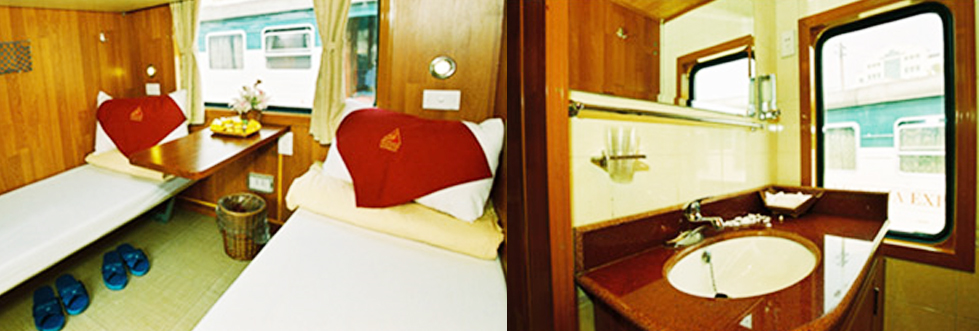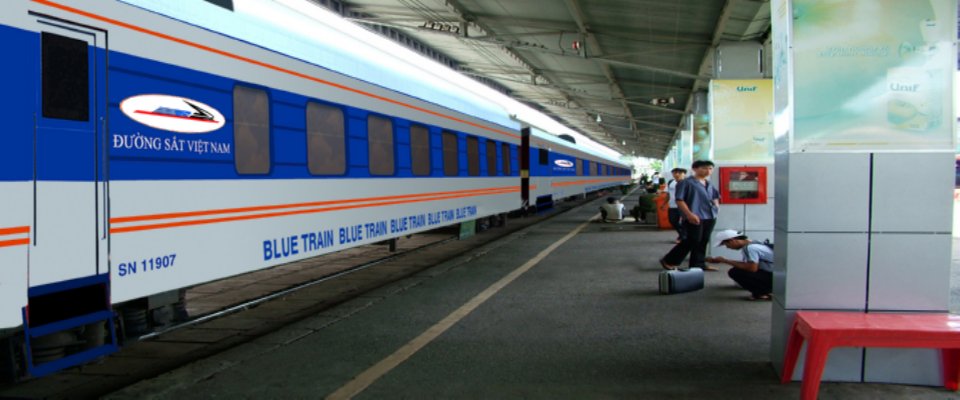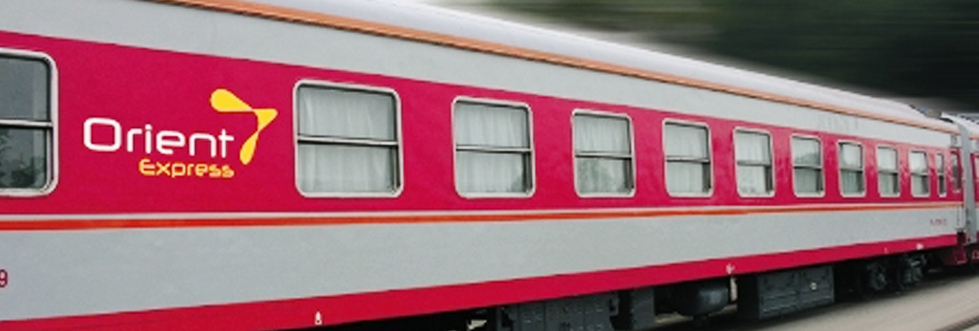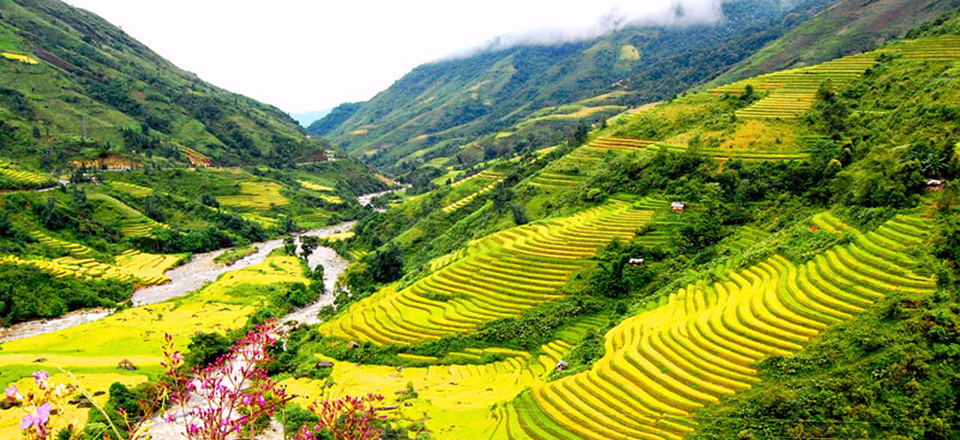Localities and attractions in Sapa
1 - Cat Cat Vilage
Cat Cat is a village of the Black H’mong, about 5 Km west of Sapa Town. Located
near the bottom of a deep valley right at the foot of Fansipan, the village is
surrounded by high mountains and terraced rice paddies on hill slope. There is a
waterfall near the village where the French built a hydraulic power station and
It is really a beautiful sport. A short walk from Sapa Town to Cat Cat Village,
especially in late afternoon to admire magnificent landscape is worthwhile.
2 – Muong Hoa River & Valley
Starting as a small stream of water from the foot of Silver Waterfall about 14
Km northwest of Sapa town, weaving its way along mountains’ feet southeast
between the two mountain ranges. About eight kilometers southeast of Sapa town,
the two mountain ranges open wider to form the Muong Hoa Vally which get
wider and wider as it goes further south about 30 km. The Muong Hoa valley is
famous for breathtaking scenery and is the largest farmland for rice growing in
Sapa district.
3 – Y Linh Ho Village
Located about 7 km southwest of Sapa town, on the west side of Muong Hoa River.
Y linh Ho is a small commune composed by a dozen of small hamlets
scattering on the very tough mountain terrain with high and steep mountains.
There are some hundred inhabitants from the Black H’mong only living in this
commune. They built their rudimentary houses on their farmland and mainly
cultivate corn and dry rice on the steep hillsides. The only way to get to the
commune is on foot from the main road. It is also the place where we start many
of our hiking tours.
4– Lao Chai Village
About 8 – 9 Km southeast of Sapa town on the west bank of Muong Hoa River, Lao
Chai is a commune composed by three large villages with over 100 families
of the Black H’mong ethnic. From a high point of the main road 8 Km from Sapa
town, great view of the whole village open wide to offer the marvelous panorama
of the village, backed by high mountains and facing the river. The H’mong people
in this village experience rice intensive farming on the lower land near the
bottom of the valley as main source of earning while growing corn on the
mountain slopes at the back of the village.
5 – Ta Van Village
Next to Lao Chai on the same side of Muong Hoa River is Ta Van where the
Zay and H’mong ethnic people live together. This is one of the best places to
see the different traditional ways of living as well as cultural assimilation.
The Zay live a sedentary style and always choose the low land near valleys’
bottom and river for growing wet rice while the H’mong prefer higher elevation
for corn farming. Especially some decade ago when poppy cultivation for opium
was not forbidden. Recently, the H’mong changed from sifting into sedentary way
of life they gradually move to lower land and learn many things from others. At
this moment Ta Van can be reach by car, Jeep, mini van. However a trail up and
downhill from Y Ling Ho through Lao Chai to Ta Van offers superb and romantic
rout to hikers.
6– Su Pan Village
Also located along Muong Hoa Valley like Lao Chai and Ta Van but Su Pan commune
can be referred to as “mountainous commune”. Occupying the highland on the east
side of the main road about 17 Km from Sapa town,Supan including 4 small
hamlets of the Black H’mong and Red Zao looks down to the Muong Hoa Valley and
is one of the poorest commune to Sapa due to the thin and poor soil. Walking
uphill from the road, one can see rudimentary houses built on the rocky farmland
where the locals cultivate corn for their staple food.
7– Giang Ta Chai Village
Opposite to Su Pan on the other side of Muong Hoa River and valley is Giaang Ta
Chai Village of the Red Zao ethnic, nested under shade of the trees and
bamboo hedges near a large and magnificent waterfall. The Red Zao people here
built their houses on the rocky land and little bit reserved to outsiders. From
the main road, a narrow trails as a string down to the river and a romantic
suspension bridge cross to the other side, passing the foot of the waterfall to
the village.
8– Ban Ho Village
At the end of the motor way about 25 Km from Sapa town lies a vast and flat
valley, circled by mountains and hills. It is Ban Ho valley home to the
Tay ethnic. The Muong Hoa River winds its way around the village provide fresh
water for 2 crops of rice and bean every year and it make the scenery of the
valley more romantic. The Tay people possesses high rice farming technique and
live sedentary lifestyle. Their villages are often very large with hundred
households. Their houses are impressively built on stilts in unique structure to
form superb dwellings. It is also a very good village for experiencing home
stay.
9– Thanh Son – My Son – Nam Cang Villages
Lying at the southern edge of the district, about 35km from Sapa town, these
three villages each consist of about 10 to 15 families are among the most remote
villages and home to the Xa Pho, a very small ethnic group populated as few as
nearly 4,000 in Vietnam only. Till nowadays these people rarely contact with
people from other group and most of them can speak their own slang only. However
schools were built in these villages recently and the children now go to school.
The Xa Pho in these villages are among the poorest people in Vietnam due to
backwards farming technique. They mainly live on slash and burn agriculture,
hunting, gathering forest products such as bamboo shoot, mushroom. For about 10
years up to now, some projects and programs have been carrying out here in order
to help villagers to handle better farming technique to improve their life but
it will take time. A tough trail which takes about 5 to 6 hours walk from Ban Ho
village which offers fabulous scenery and a chance to explore, meet and witness
the amazingly hard life of the Xa Pho in these villages.
10– Ma Tra & Ta Phin Villages
Lying some kilometers east of Sapa town lies a large oval shaped valley which is
home to the H’mong and Red Zao of Ma Tran and Ta Phin. Following the main road
from Sapa to Lao Cai for 4km, one can enjoy the panorama view of the whole
valley, stretching for about 12 Km with some low hills in the middle to divide
the valley into two parts. The closer part to the road is area of Ma Tra village
and the further one is Ta Phin village where the Red Zao and Black H’mong share
the land. The H’mong occupy the higher land on which they built narrow terraced
rice paddies while the Red Zao cultivate larger and flat fields around the
center of the valley. From over 10 years ago, a 15km motor way was built to
connect the center of the valley with Sapa town and it takes only half an hour.
However, It is much more interesting to follow the trail which run on high
elevation around the valley for a real life discovery.
11– Silver Waterfall & Tram Ton Heaven gate
Following the main road 4C 14km further north is the famous Silver Wterfall
and 4 km more is the highest mountain pass of Vietnam which is called by locals
Heaven Gate. The road ride offers great view of the magnificent Fansipan on the
other side of the valley with immense lush forest. Tram Ton pass is also an
ideal point for enjoying breathtaking scenery of the west side of Fansipan which
is very different from the east side due to the different climate.
Sapa Budget Tours
- Sapa Day Tours - Sapa Day Excursions - Day Trips Sapa Vietnam
- Sapa Walk and Bac ha Market
- Sapa Hard Trekking Two
- Sapa Hard Trekking One
- Sapa Medium Trek Two
- Sapa Medium Trek
Sapa Trekking and Adventures
- Fansipan peak conquering VIP tour (3 days - 2 nights)
- Fansipan peak conquering VIP tour (2 days - 1 nights)
- Fansipan peak conquering Deluxe tour (4 days - 3 nights)
- Fansipan peak conquering Deluxe tour (3 days - 2 nights)
- Fansipan peak conquering Deluxe tour (2 days - 1 nights)
- Fansipan peak conquering Standard tour (4 days - 3 nights)
Sapa Cycling Options
- Sapa - Binh Lu - Lai Chau(with biking)
- Sapa - Lao Chai - Ta Van - Ban Ho
- Sapa Biking Tour - Ban Ho Village
- Sapa Biking Tour - Binh Lu - Lai Chau
- SaPa - Bac Ha Market with biking
- Pedalling The Remote Sapa\'s Northwest
Sapa Luxury Holidays
Traditional Minority Discovery Packages
- Green Sapa bus (Hanoi – Sapa)
- Eco Sapa Limousine Van (Hanoi – Sapa)
- Private car Hanoi Sapa
- Hanoi Sapa Private Cabin bus
- Coc Ly market with boat trip
- Cao Son market -boat trip on Chay river- Sapa Tours
Sapa Classic Trips
Northern Mountain Discovery Packages
Topas Ecolodge Sapa tours
- Topas Ecolodge and Market Package 3D/4N
- Topas Ecolodge and Market Package-2D/3N
- Topas Ecolodge and Victoria Sapa Package – 4D/5N
- Topas Ecolodge and Victoria Sapa Package – 3D/4N
- Topas Ecolodge Package – 3D/4N
- Topas Ecolodge Package 2D/3N











